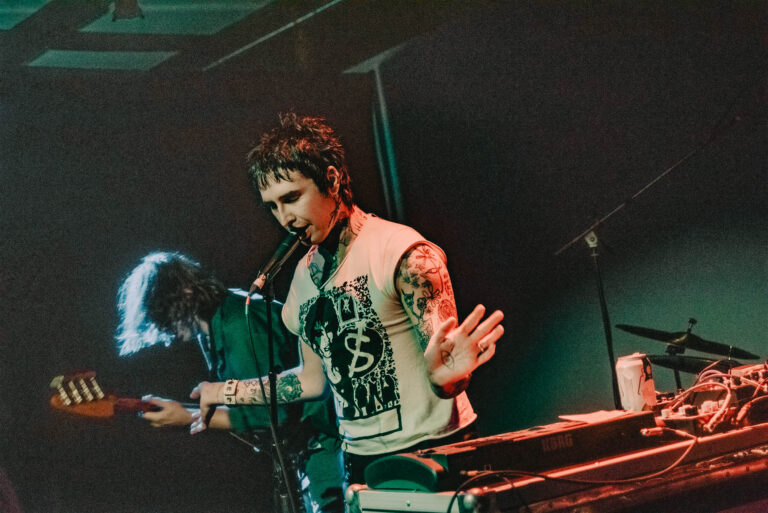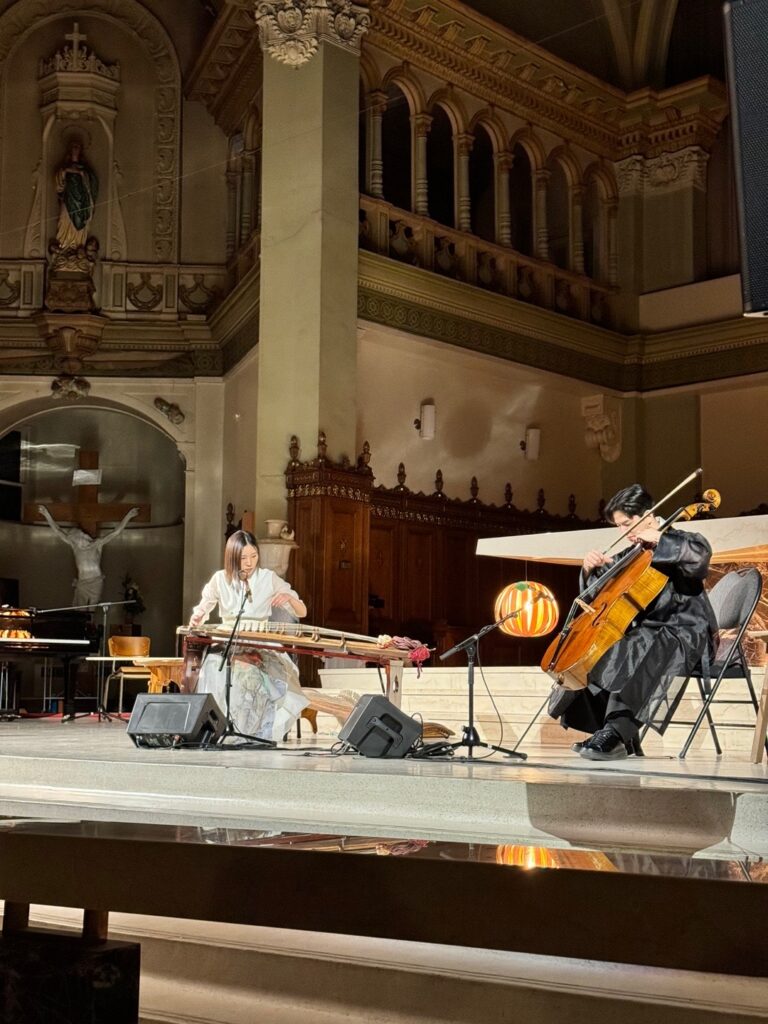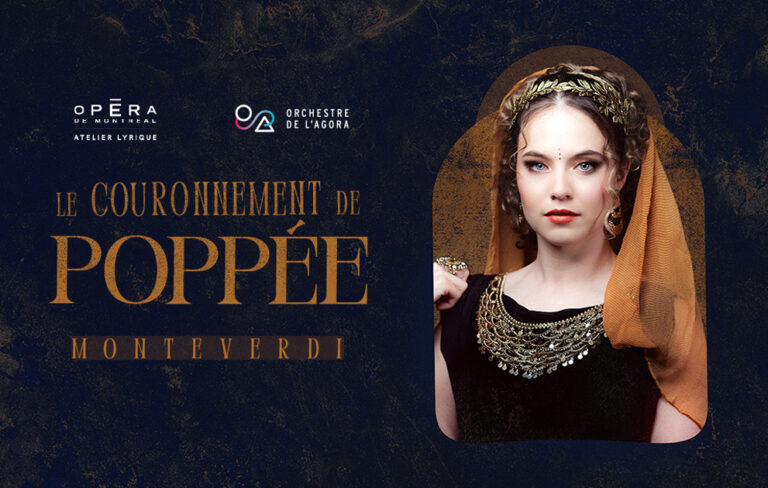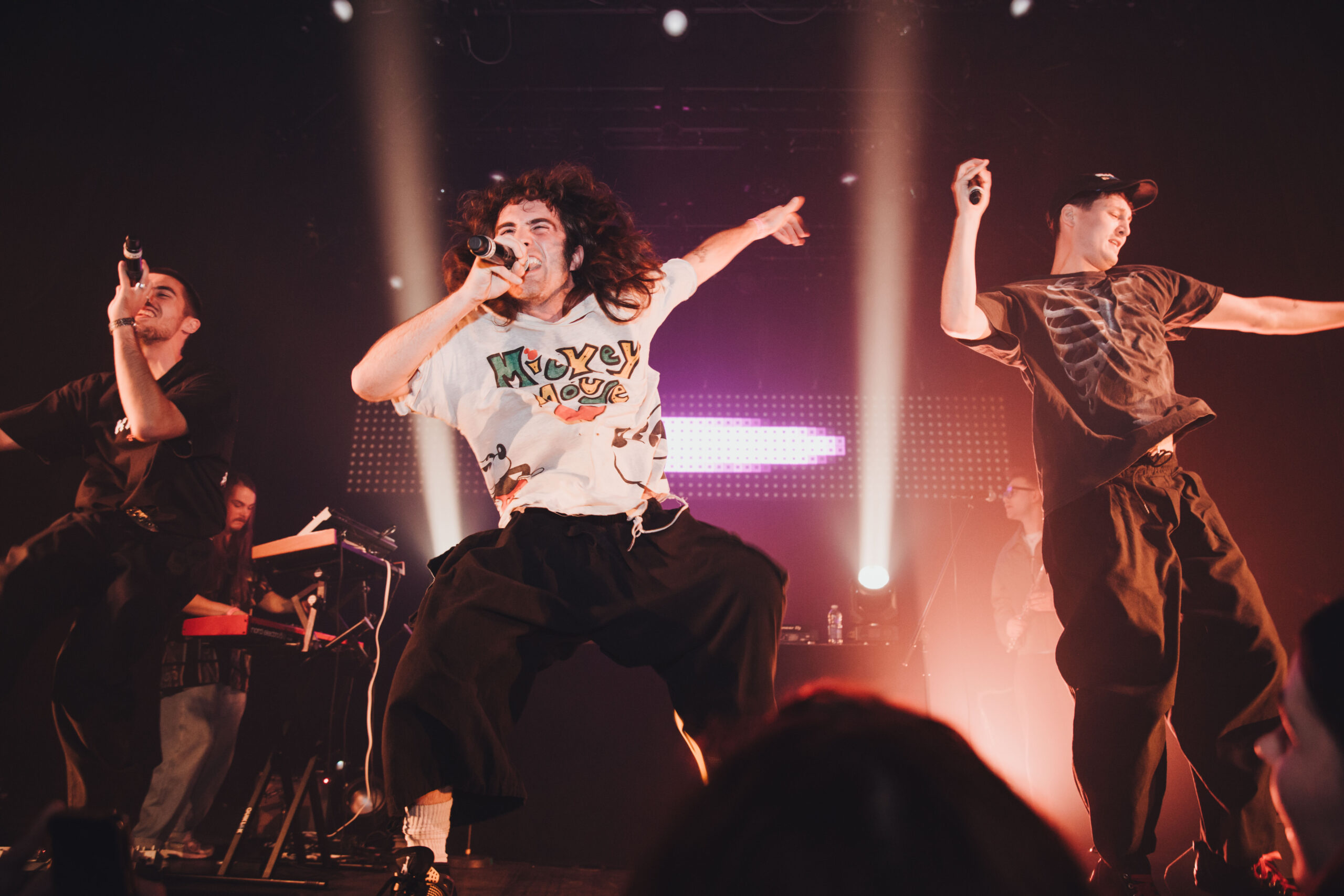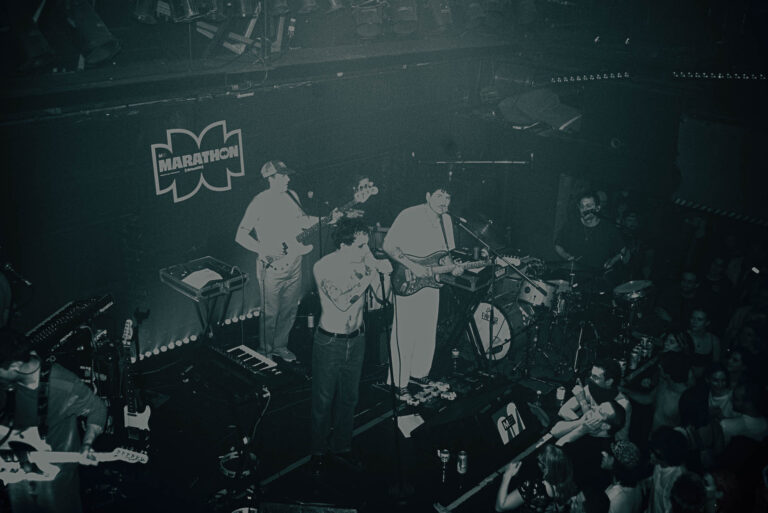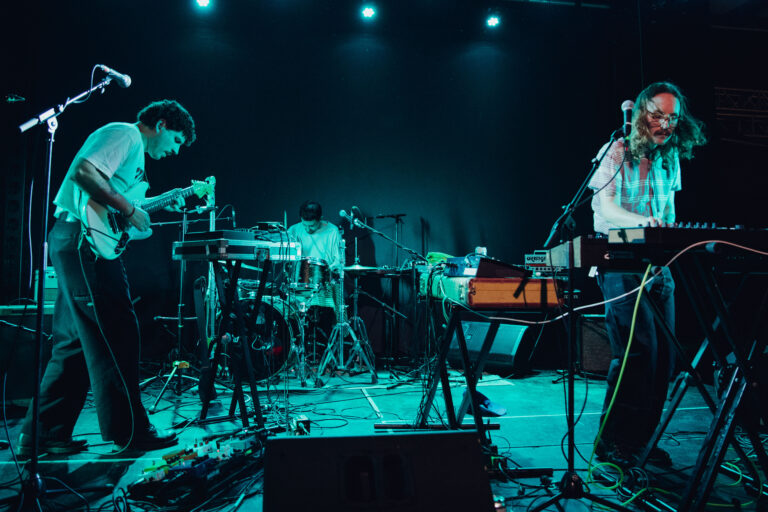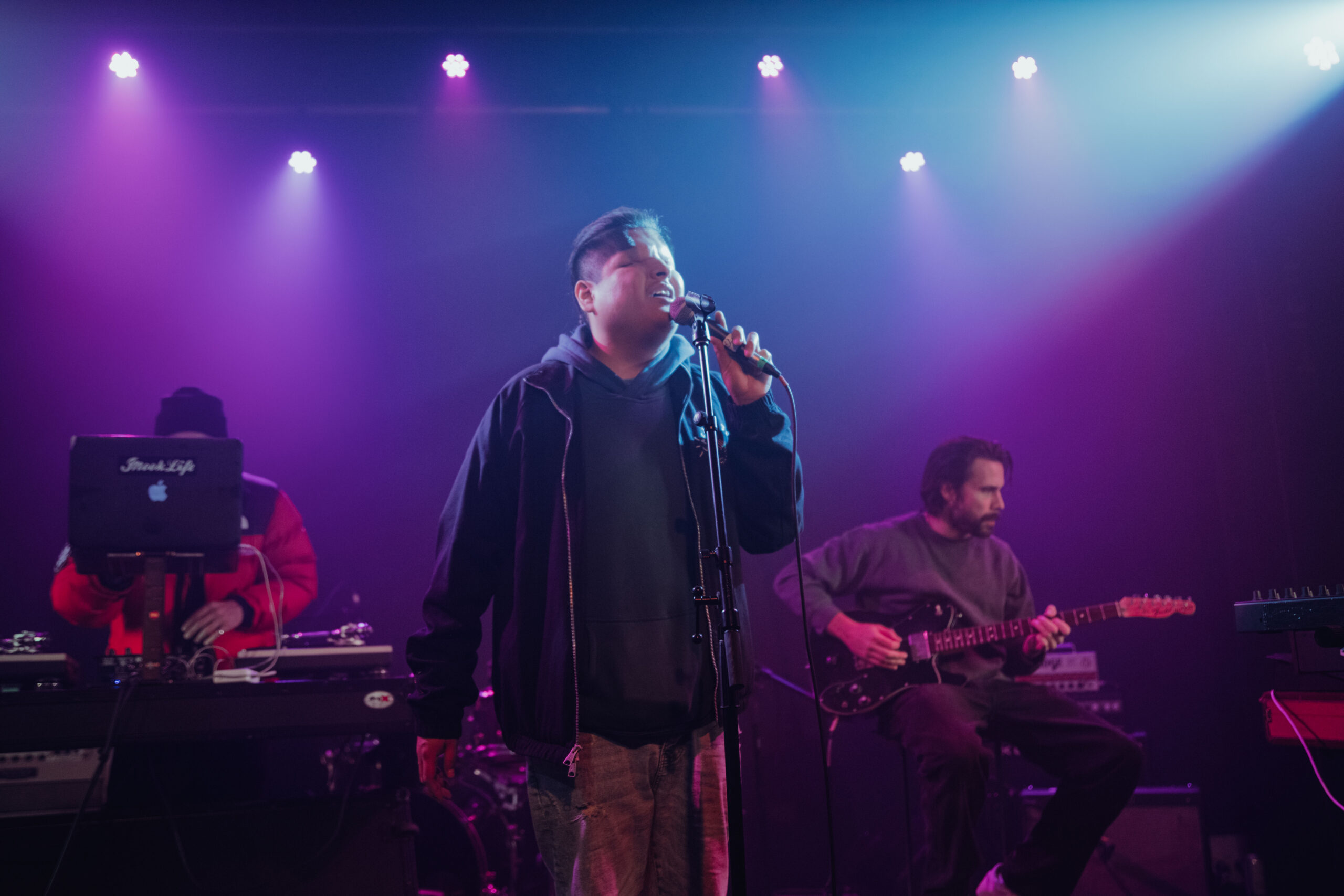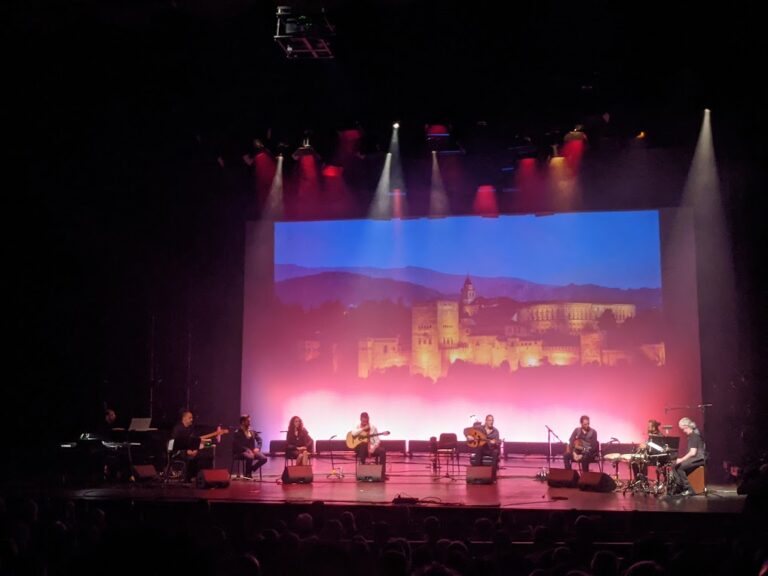The last night of the M for Montreal festival was studded with incredible acts, providing the perfect conclusion to a few unforgettable days of acts across Mile End, Plateau, and beyond. Here are two of my favourite shows from the final evening of 2023’s M for Montreal festival.
Alix Fernz – Brazen Bravado
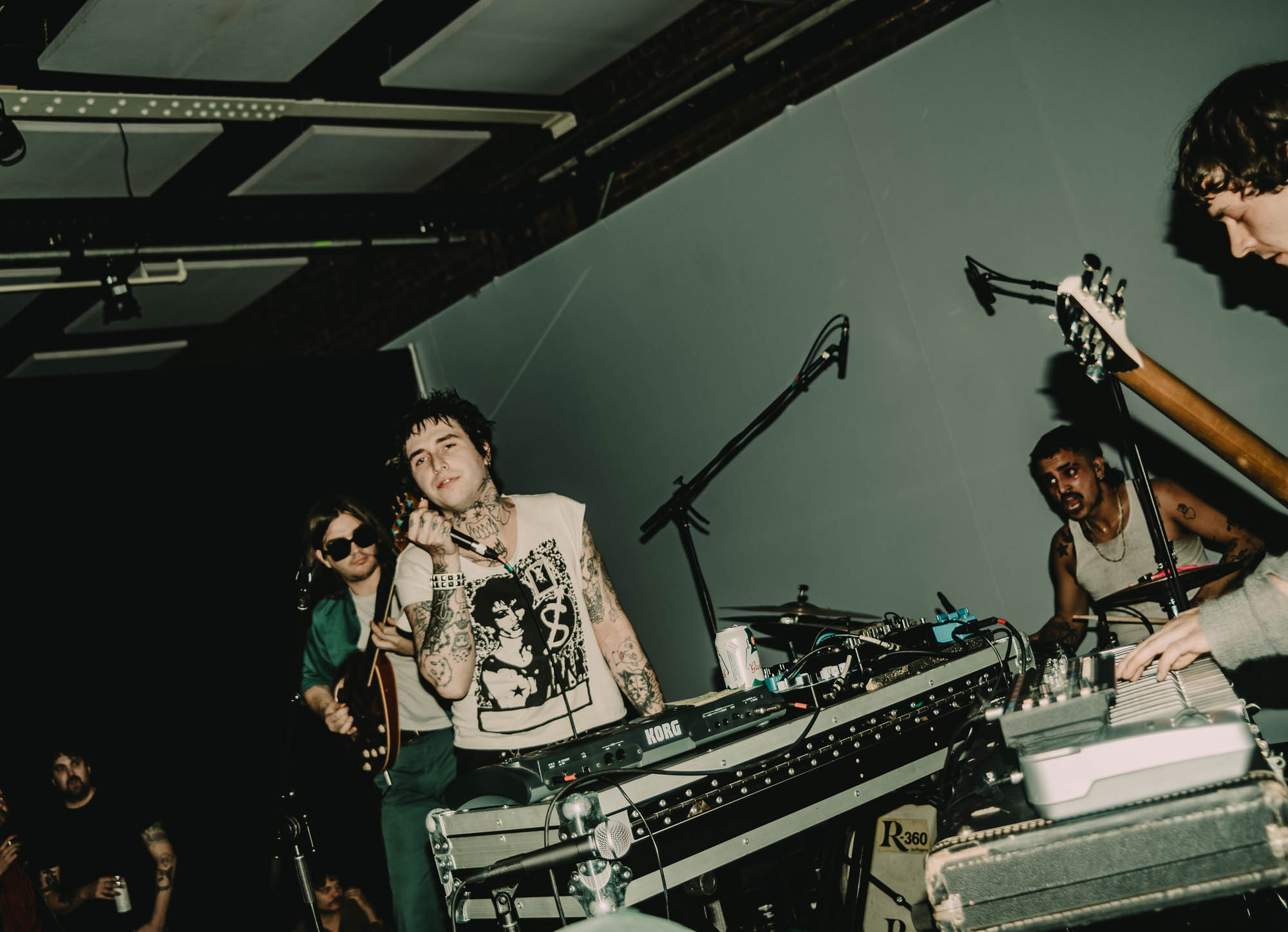
Oozing sex and a distinctly devil-may-care, diva persona, Alix Fernz was a pleasure to watch Saturday night at Ausgang Plaza. Gritty, angular punk rock married beautifully with Fernz’s irreverent, borderline bratty vocals, which feel almost otherworldly once they’ve been filtered through his eclectic circuit board of synths and effects laid out on the table in front of them. Despite Fernz’s intense, post-punk-driven direction, there was a groove and even a sweetness that was so apparent from the outset. He obviously doesn’t take himself too seriously, which is a good thing when it comes to his atypical brand of brazen bravado. Fernz’s band was also excellent, featuring powerful, driving drums, rock-steady bass, and a fantastic blend of synth and guitar to keep us guessing. Fernz’s set was all meat, no filler, and an absolute blast to watch.
Pelada – D&B From the Future
Montreal duo Pelada has become known for a number of things over the years, including their live performances. While I was initially disappointed to hear that the pair wouldn’t be busting out any live vocals for their Saturday night set at Fairmount Theatre, this feeling didn’t last long. Delivering a crunchy, gravelly, futuristic set of D&B, house, and strange, post-techno, Pelada invigorated. Thumping bass. Screeching synths. Dirty vocal samples. It’s the kind of music that makes you want to do something mildly illegal in a dirty club bathroom, or perhaps do triple the limit on a nighttime city street. It was a pleasure to see this side of Pelada’s sonic sensibilities, and only makes me more intrigued to see what the duo might do next.
